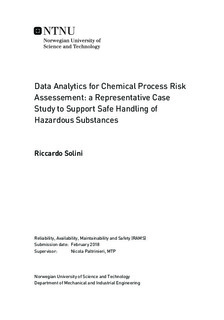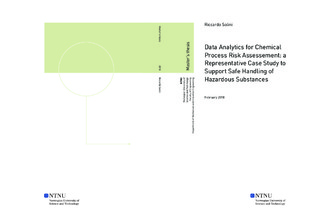| dc.description.abstract | Potential of data generation has exponentially increased nowadays. Through the World Wide Web, for instance, information of any kind are collected and stored in databases. In the industrial sector, a huge amount of data is set to be collected by the so-called industry 4.0. Also the Seveso III Directive, which contains the rules for preventing and fighting major accidents in establishments handling dangerous substances, advances the need of monitoring and analyzing data in order to improve the safety management system of the plants. In this context, the discipline of machine learning is suggested. It consists in methods through which computers automatically retrieve knowledge from data. On the basis of this, they are able to support or take decisions.
However, data are still not exploited as they should be and opportunities to learn are lost. It is necessary to improve the use of such data and increase our knowledge.
This work suggests an approach to analyze heterogeneous data about past accidents in process industries and extract important information to support safety-related decision making. The knowledge retrieved should help improving the evaluation of the risk picture, by predicting the consequence on humans.
The machine learning tool used to analyze the data is the open-source library TensorFlow. Through its use, different models are built - a linear model, a deep neural network model and a combination of the two. The models, on the basis of specific inputs, may be able to make predictions about the number of people killed or number of people injured. The tuning of the model's parameters is carried out using the past accident data contained in the MHIDAS database as training data set. To evaluate the performance of the model another data set is needed. For this reason, a new database has been built. Ammonia plants, which fall under the Seveso III Directive, have been taken into consideration. Accidents occurred in these establishments - or in similar sections of other plants - have been take into account, investigating public accident databases, books, articles and journals. Their data have been collected and registered in a common database using MHIDAS keywords. A set of simulations have been performed not only to validate the models, but also to identify their limitations. A good model for accident prediction needs to be able to predict rare events - \emph{i.e.} the ones with the highest number of people killed or injured. This condition is obtained if the value of the statistic metric "recall" is high. For this reason, the results returned by the simulations have been analyzed considering the value of the area under the curve precision recall as a priority. From this, it is possible to understand if the value of recall can be of interest or not. The results obtained have shown a common trend and a type of model that, in general, have had better prediction skills than the other ones. | en |

